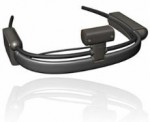Ad sense

In recent years, economic stress dealt a hard blow to companies struggling to maintain competition. To compensate, businesses are investing in neuromarketing – the study of involuntary and voluntary physiological responses to advertising.
Neuromarketing can show an audience’s likes, engagement level, attention to the ad and its overall effectiveness. While some consider it a non-traditional advertising tactic, neuromarketing is among contemporary strategies used by large companies.
Associate professor at USF’s School of Mass Communications Scott Liu, however, doesn’t think neuromarketing will make human advertisers obsolete.
“The effect that the rise in popularity of this technology will have on those in the field should be minimal,” Liu said. “The fact of the matter is that students graduating from USF with a degree in advertising have to understand people, and work around the group’s psychographic profile.”
The EmSense Corporation is one company that has made neuromarketing its specialty. EmSense has developed technology that keeps track ofaudience reaction to advertising through “physiological sensors that measure everything from viewers’ brain waves, blinking, breathing and physical motion to their heart activity, to the moments when they blush,” according to its Web site, emsense.com.
“The lightweight EEG headset, EmSense’s primary product, prevents the creation of a false environment,” said Rick Loughery, EmSense’s public relations consultant. “Whereas the technology offered by other services look more like showers caps covered in wire, which make movement uncomfortable.”
Surveys are often used in marketing to generate psychographic and demographic profiles. The American Marketing Association defines psychographic analysis as a “technique that investigates how people live, what interests them, and what they like.” These figures are then used to identify the best ways to market products to different groups of people.
“These techniques go beyond the interests and likes of the test subject,” Liu said. “They reveal physiological responses and are the most accurate way to understand what grabs the consumer’s attention.”
EmSense is working with corporations like Virgin Mobile USA, Coca-Cola and the ESPN division of Walt Disney, using neuromarketing techniques to examine audience reaction.
“Coca-Cola, for example, tested several commercials that they were considering using before the last Super Bowl, and invested quite a bit on the research,” Loughery said.
Companies are after an emotional attachment to their product.
“Emotional response to an ad is the sign for a successful strategy,” Liu said. “We measure attention second by second, how emotionally engaged you are with what you’re watching – whether it’s a commercial, a movie or a TV show -and memory retention,” Liu said.
Some consumer advocates question the role of physical or behavioral audience responses in advertising research. Professor Liu is one of the many in the field who doubt the value of brain wave measurements.
“Advertising students are not at a threat because we teach them how to creatively market a product taking certain cultural changes into account without fancy equipment,” he said.
Critics of neuromarketing worry that blending “weird science” and advertising will give marketers an unfair advantage over consumers by revealing ways to overcome resistance to ads.
“Resistance to ads can only be understood on an individual level. These methods are not going to result in the discovery of some science fiction-like secret to advertising,” Liu said.
Liu is reluctant to give much credence to the new technology. Instead, he says many factors affect whether someone purchases a product.
“Truly, the more traditional methods are still, even when compared to neuromarketing, the most effective. A good advertiser will think of creative ways to sell the product and should know what will work in an ad before it is produced,” Liu said. “The brain wave measurements only decipher whether something works after the strategy is in play, and in the business that information is not as valuable.”
Proponents of the technology, however, insist that EmSense and its product can push advertising in a new and enlightening direction.
“EmSense plays an important role in the advertising industry,” Loughery said. “Their technology unearths particular bits of information that simply can’t be known through traditional methods.”







